
© Paul Kolnik. (Click image for larger version)
New York City Ballet
Ballo della Regina, Kammermusik No. 2, Vienna Waltzes
★★★★✰
New York, David H. Koch Theater
10 May 2016
www.nycballet.com
davidhkochtheater.com
The Last Waltz
In the second volume of Balanchine Variations, Nancy Goldner writes that when Vienna Waltzes premiered, in 1977, it instantly became the most popular ballet New York City Ballet had ever staged. It’s not hard to see why. Vienna Waltzes is a sure-fire hit. It seduces on many fronts: the ridiculously flattering gowns by Karinska (her last for the company), the sumptuous music, the multitudes of dancers. It returned this season, in good form, after several years out of rotation; it’s always good to see it again.
The ballet has five parts, each set to a different piece of music. Three (“Tales from the Vienna Woods,” “Voices of Spring,” and “Explosions Polka”) are by Johan Strauss II. One, the “Gold and Silver Waltz,” is by Franz Lehár, and sounds awfully like an outtake from his operetta The Merry Widow. And the last section – both the most moving and the most spectacular – uses a medley of waltzes from Richard Strauss’s Rosenkavalier. The pieces create moods and shape the tone of the relationships between the people onstage. In general, the ballet proceeds from private to grandiose emotion, but in reality, the first and last pieces have much in common. The woman at the center of each might even be the same, at different points in her life: young, naïve, experiencing love for the first time in the first waltz; older, wiser, and infinitely sadder in the last.
In “Tales,” a group of army cadets and young women in long, pale pink gowns and pumps waltz in the woods. (The somewhat chintzy stage designs are by Rouben Ter-Arutunian.) At the start, the music, a tender melody for the zither – I believe it’s played here on the harp – is almost hesitant. The lead woman might be a girl at her first ball, lost in the thrill of the moment and overwhelmed by the attentions of her partner. She is vulnerable; her face and shoulders are always tilted toward the man, as if she were afraid to let him out of her sight. At one point he leaves her alone, and she looks as if she might die of embarrassment; then he returns and all is well again. Savannah Lowery danced the role with simplicity and ardor. There was no fussiness or overacting. Her cavalier, Russell Janzen (a début) exhibited just the right mix of elegance and solicitude. Tomorrow, the young officer may go off with another girl, but for now, he is the picture of gallantry.
Then come the two weakest links in the ballet, “Voices of Spring” – the only section danced on pointe – and “Explosions Polka.” “Voices,” the most impersonal of the five, is a balletic and energetic waltz for a couple backed by eight women. It could be a divertissement at the Paris Opéra circa 1850. Sterling Hyltin made what she could out of its generic whirls and leaps; Gonzalo García’s dancing lacked polish. The “Explosions Polka,” a frisky and rather louche dance for four couples, is all open thighs and protruding derrières. On a good day, it’s right at the edge of camp; Georgina Pazcoguin, the lead at tonight’s performance, took it way over that edge.
The final two sections got things back on course. In the “Gold and Silver Waltz,” we move into the fin de siècle. The set suggests a gilded art-nouveau café dansant, with little tables and chairs along the sides. A mysterious woman in black, wearing an enormous hat, enters; the men shower her with attention, which she enjoys immensely. She holds out a gloved hand to each, while the other rests nonchalantly on her hip. Then a gentleman catches her eye, perhaps an old flame. From then on they play a game of cat and mouse. She entices him, then pulls away. He feigns indifference. Mostly, they revolve around each other, often back to back, caught in an eternal circle of mutual attraction. In her début, Lauren Lovette looked ravishing in Karinska’s black dress, her eyes sparkling with mirth as she entered the room. Lovette’s ability to get herself into character is one of the things that makes her so much fun to watch; in this and her coloring she reminds me of Jenifer Ringer. She could play a little harder to get. At present, she gives away the ending too soon. And her way of picking up the corner of her train is awkward; the gesture should be second nature. But Lovette is made for this role. Chase Finlay, as the man at whose arm she will leave this dance, is awfully stiff. He looks more like a Walt Disney prince than like a dashing man-about-town. He needs to lighten up.

© Paul Kolnik. (Click image for larger version)
Maria Kowroski, just back from maternity leave, was the lone woman who opens the “Rosenkavalier” waltz, in a ballroom lined with mirrors and dripping with chandeliers. (One of the lamps kept flickering; I guess the wiring in the ancien régime was a bit iffy?) This scene has always suited Kowroski; there is a whiff of sadness in her dancing. The woman enters with her back to the audience, as if she were concealing her true feelings. But we can read them in her back, the way she hesitates slightly, the tilt of her shoulders and head. She curtsies to an imaginary partner, offers her hand, delicately places it on his shoulder, and sets off on her own, internal waltz. Kowroski dances the whole thing as if in a dream. Then the other couples surge onto the stage in a slow, driving swoop, like a military advance. It hits you in the solar plexus. By the end, you don’t know whether you want to clap or cry.
The orchestra suffered a number of mishaps throughout the evening; problems with intonation, muddiness, and a violin solo gone astray. Luckily, with Cameron Grant at the keyboard, Paul Hindemith’s Kammermusik No. 2 stayed on track. Teresa Reichlen and Sara Mearns reprised their energetic performances in this often manic ballet. Mearns was ferocious here, hair flying, sides bending, arms lashing. Reichlen played it cool, even as her legs and arms flew in all directions. The two central pas de deux, almost marionette-like, were stylishly negotiated by Jared Angle and Zachary Catazaro.
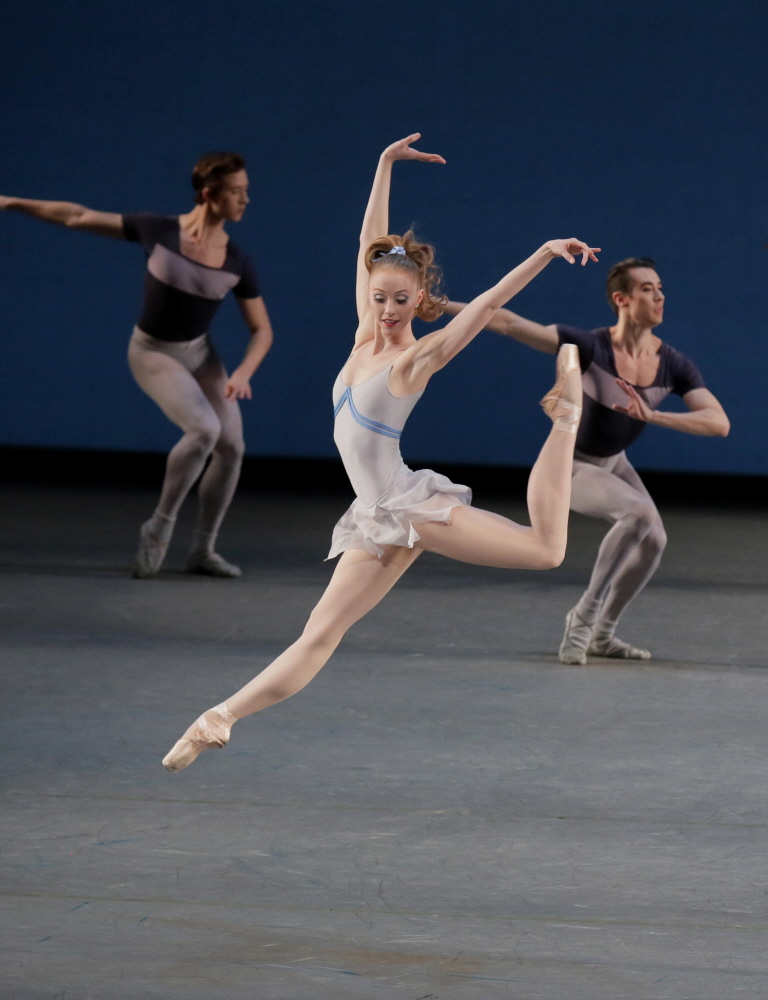
© Paul Kolnik. (Click image for larger version)
The evening opened with Ballo della Regina, which has improved significantly since last season. Megan Fairchild danced the fast, staccato, role with bubbly charm. The four backup women, Alexa Maxwell in particular, flew through their solos. But the real scene-stealer was Anthony Huxley, another début. Each entrance was more exciting than the last, if his partnering still needs work. The most impressive thing about his dancing right now is the seamlessness of his phrasing. An entire solo, filled with the most difficult steps, both big and small, is delivered as if with one breath. There are no blurry transitions to interrupt the flow. And he’s finally developing a stage personality, courtly and self-effacing but amiable, a little bit amused by everything he can do. The more the better.












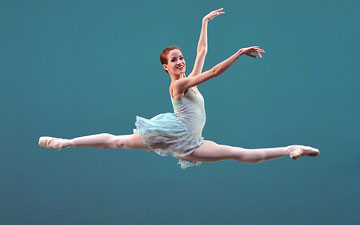
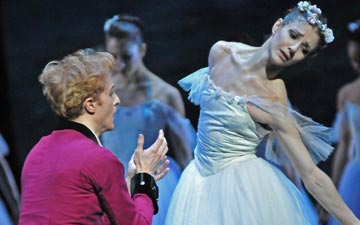

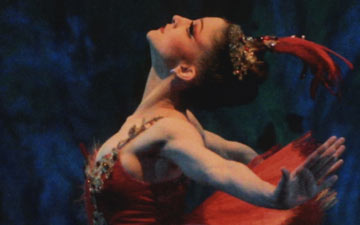
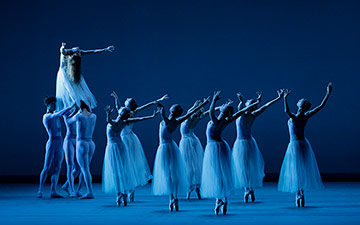
You must be logged in to post a comment.